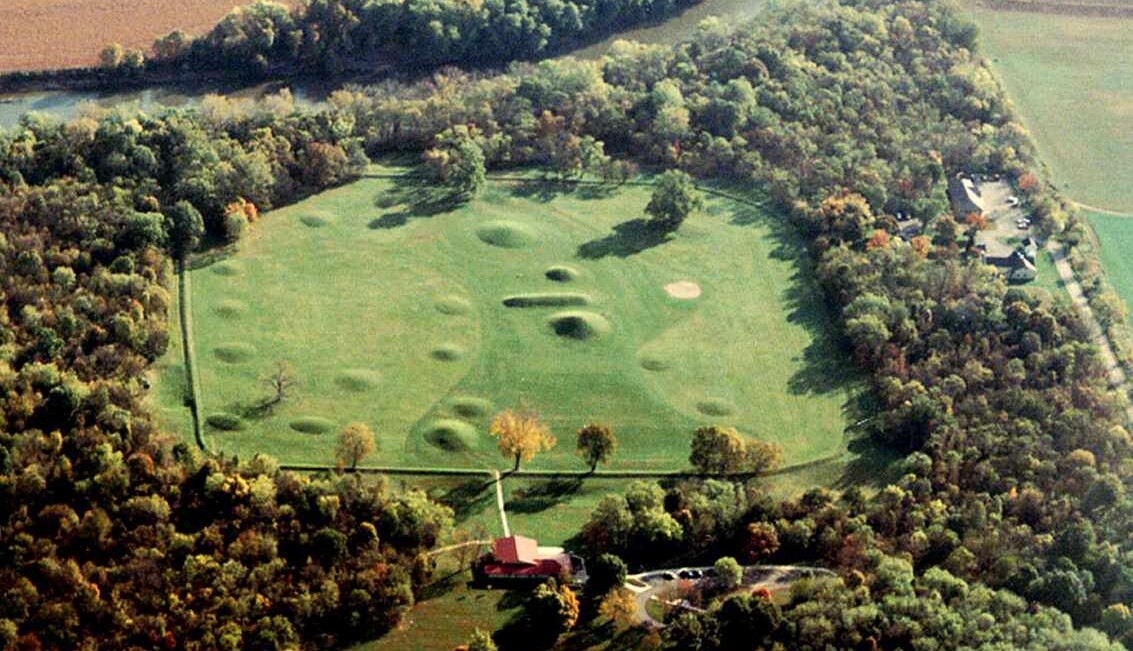
In the rustbelt state of Ohio, famous for being the epicenter of so much great American music, a little-known collection of earthen mounds has made national headlines for their historic testament to their maker’s deep wisdom.
The Hopewell Ceremonial Earthworks recently became the 25th property from the United States to have the honor of a place on the UNESCO World Heritage List, a selection of buildings, locations, cities, and landscapes that tell a significant part of the story of humanity.
Built between 2,000 and 1,600 years ago, they are described as “complex masterpieces of landscape architecture and are exceptional among ancient monuments worldwide in their enormous scale, geometric precision, and astronomical alignments.”
“The huge squares, circles, and octagons, which are geometrically precise and align perfectly with the cycles of the sun and moon, were built by dispersed communities of American Indians who periodically gathered at these special places to worship and stay connected to one another,” reads an explainer on Hopewell Ceremonial Earthworks’ official website.
It took a decade of advocacy from groups like Ohio History Connection and the Department of the Interior to get a nomination to the UNESCO pending list in 2022.
Of the site’s truly interesting features is its collection of Native American artifacts that have origins from all over the North American continent, including seashells from the Gulf of Mexico, shark teeth from the mid-Atlantic, obsidian from the Pacific Northwest, and silver and copper from modern-day Canada.
MORE NORTH AMERICAN HISTORY: 300 Epic Ancient Murals ‘Unique in the World’ Depict Creation Myths on Texas Rock: ‘Oldest Books in North America’
The mounds would have been the site of ritual and gathering, but the people who lived there were very different from the North American mound builders of Cahokia, who had a stratified hierarchical society that included a ruler and caste of nobles.
At Hopewell, even those interred with obvious honorific funeral rights seemed to wear the same clothes, eat the same food, and do just as much labor as everyone else. Their ceremonies at the mounds, perfectly aligned to movements of the sun, and even more complex movements of the moon, carried on for hundreds of years until about 400 CE when the mounds remained, but the ceremonies stopped.
YOU MAY ALSO LIKE: 60% of Ecuadorians Vote Against Continued Oil Drilling in Critical Amazon Biosphere
Over the next 200 years, trees began to grow overtop the mounds, and a greater focus on subsistence meant that by 650 CE, people began building in or over top of them, and their significance and perhaps secrets were lost.
Now on the UNESCO World Heritage List, it joins ancient properties like Stonehenge, the Lascaux cave paintings, and Olmec sites that have revealed the most about our most ancient organized societies.
WATCH an explainer and celebration video below…
SHARE This Incredible Heritage Site on Social Media to Surprise Your Friends…




















